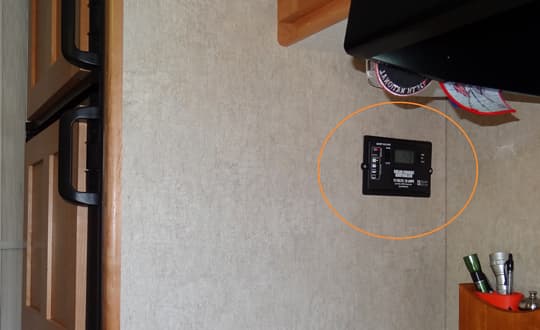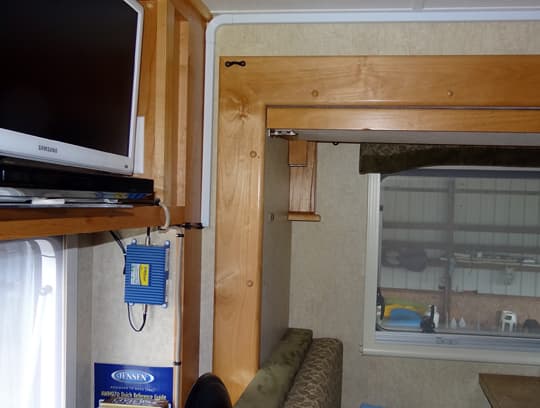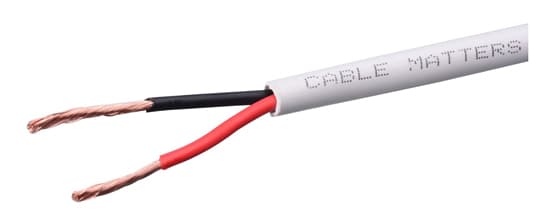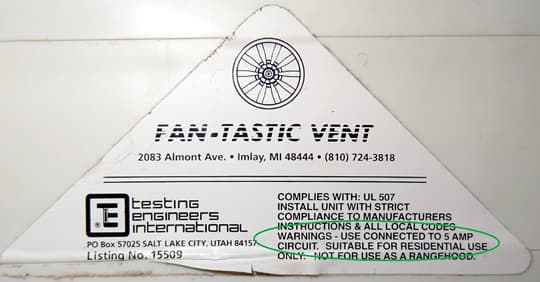There are two ways to run 12-volt wire through a truck camper; hidden wire and surface wire. Let’s examine these two options.

The wiring for this solar charge controller is hidden in the hollow wall beside the refrigerator. The refrigerator cooling tower is a great place to run wires down from the roof; solar, antennas, etc.
If you have access to usable space (interior hollow wall, basement, or storage cubby that runs from your power source to the desired 12-volt outlet destination), you can hide your new wiring. Camper exterior walls are not hollow and, therefore, it’s often difficult or impossible to run hidden wire through exterior walls.
If you have ducted air conditioning in the ceiling of your camper, wire could be fished through those ducts. Do not run wires through heating ducts. Heat is not our friend when dealing with electricity.

Above: This attractive white flat plastic molding conceals the cable for the Wilson Cell Phone Signal Booster’s indoor antenna.
Sometimes it’s not possible to hide wires inside or behind walls, basements, or cabinetry. When hidden wiring is not possible, surface wiring is necessary. The good news is that very nice self adhesive wire moldings exist that can be cut to length (complete with elbows, Ts, and straight runs) to give your new 12-volt circuit installation a professional appearance.
Another important basic consideration is safety. It’s critical to match the intended circuit load to the wire gauge and fuse.
If you crowd too many electrons (circuit load) into a tiny space (wire gauge and fuse) they get cranky (heat up) and lose their temper (heat up some more). If we try to push too much current through too small a wire, that wire can overheat to the point of causing a fire.
To figure out what gauge wire and fuse is needed for a safe installation, consult a table that matches copper wire gauges with intended loads. Here’s an example: http://www.powerstream.com/Wire_Size.htm

Above: An example of appropriate wire for many routine applications. Photo taken from Amazon.com.
In general, most low draw items in a camper will do well with a 14-16 gauge wire. With wires, the larger the number the lower the size. I don’t recommend using anything thinner (higher in number) than 18 gauge for 12-volt camper applications.

Above: Typical appliance label with suggested circuit requirement. This will determine wire gauge and fuse size for your project.
If you’re in doubt, please use the table link above. If you have an appliance that pulls 20 amps or more, please contact the appliance manufacturer or installation manual for the suggested wire gauge. It’s your responsibility to remain within the stated safety guidelines. The fuse size is likewise determined by the anticipated load of the device or circuit in question.
Before you start your 12-volt project, you must also make sure that you are going into a filtered DC circuit (like a radio/TV circuit), especially if your camper is more than a few years old. You need filtered DC so that you don’t fry your electronic devices. Check your converter’s owner’s manual for more information.
12-Volt Power Sources | Choosing A 12-Volt Outlet For An RV
